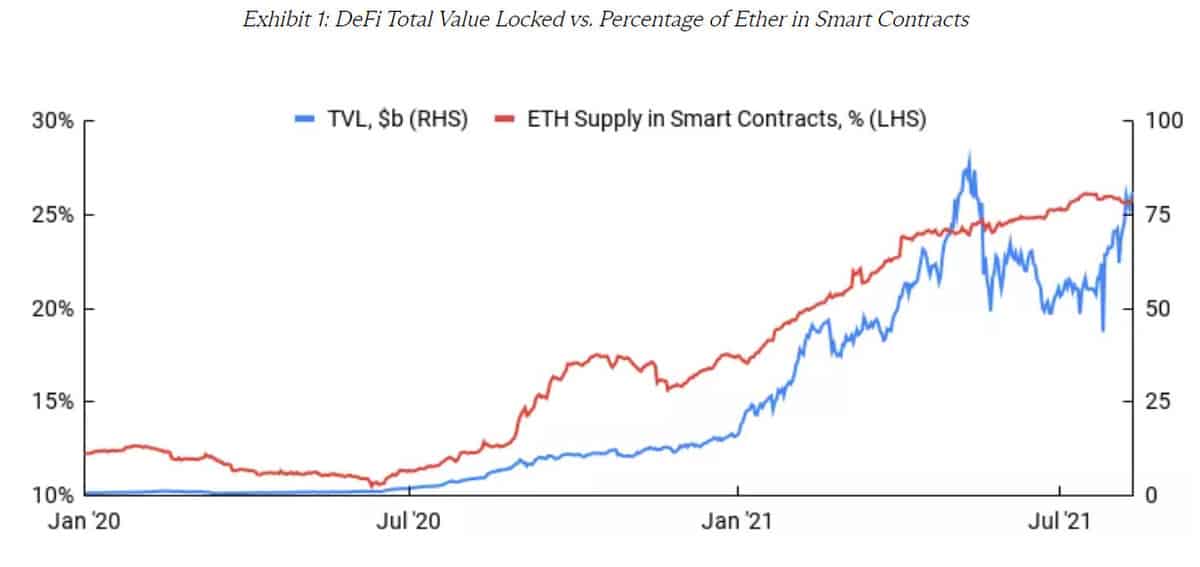The total value locked (TVL) is the amount of assets locked in DeFi smart contracts at a particular time, and the defacto measure of DeFi’s activity.
However, TVL only tells part of the story. First, leverage can increase TVL, for example, as one who deposits ETH on Maker to get DAI, trades the DAI for ETH on an exchange, and then deposits that ETH back onto Maker will increase Maker’s TVL. It can also be difficult to compare TVLs between dApps as some, like Maker, issue new tokens (DAI) upon receiving a deposit, increasing TVL, while others, like Compound or Aave, let users borrow tokens, reducing the total supply.. Furthermore, TVL is significantly affected by token prices, making it difficult to compare the amount of underlying activity over time.
Measuring DeFi Activity: #
DeFi activity can also be measured by additional measures, such as the number of dApps, transactions, and total and active wallet addresses. As well as decentralized exchange volumes, outstanding DeFi loans, stablecoin supply, and even capital raises can be useful indicators. The percentage of ether locked up in smart contracts is one of our preferred metrics. Similar to TVL, this metric examines what is locked in a protocol at any given time, but it removes the price of ETH from the equation for a more direct look at activity. Below are the numbers for the Eth2 Deposit Contract, which went live late last year and contains ~7m ETH or 5.7% of the total supply. Even though it may appear that DeFi activity took a step back over the last few months before recovering, the percentage of ether locked in smart contracts shows DeFi activity never stopped.
